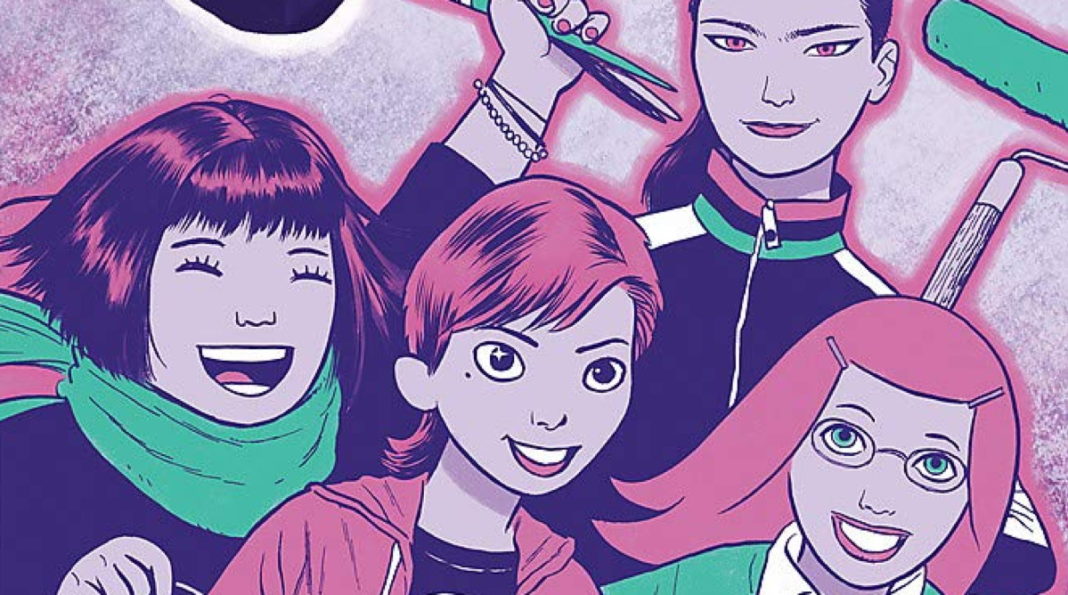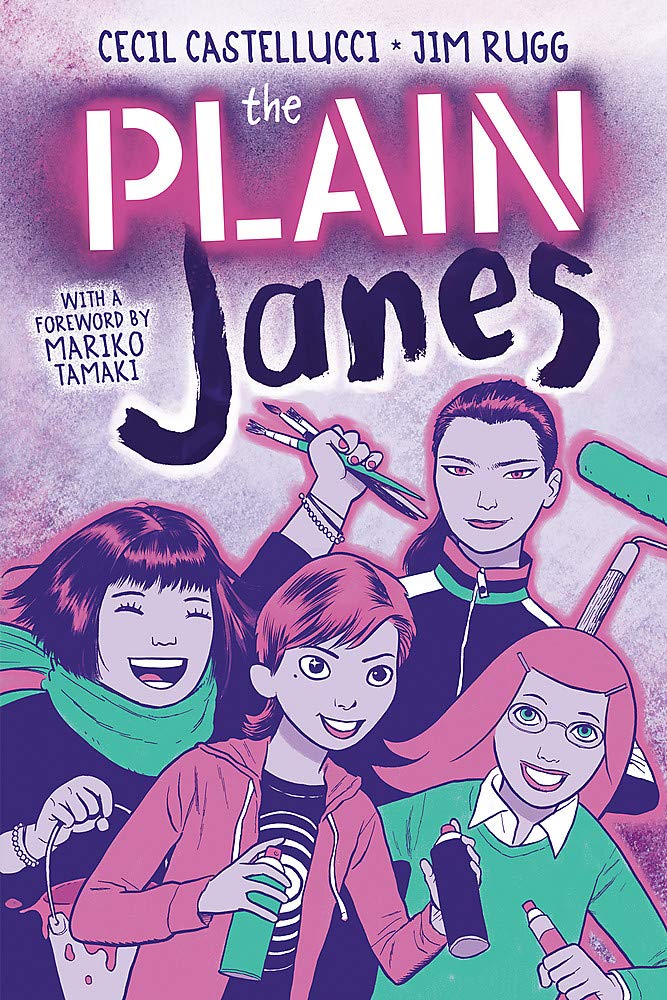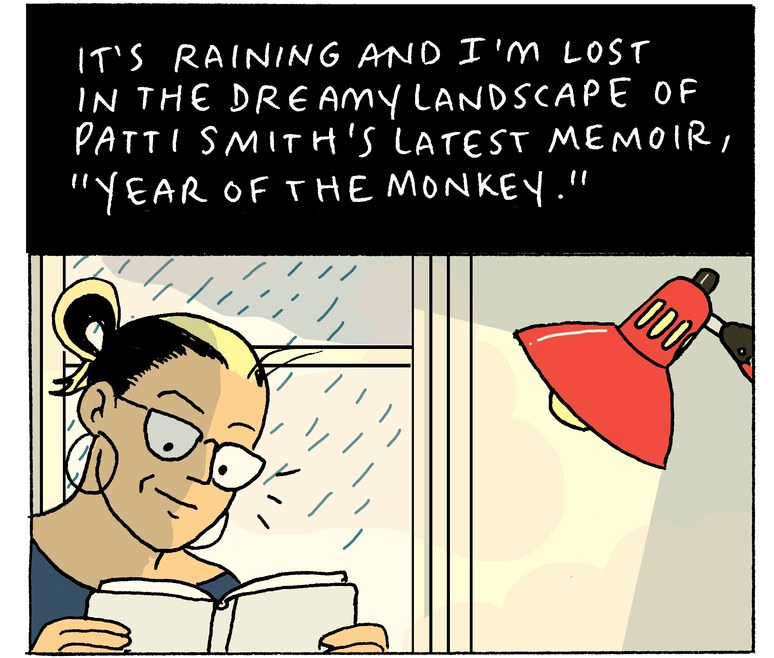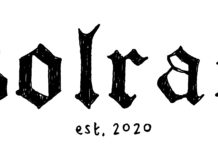§ I don’t really know if it qualifies as nice art, but this “Picrew” avatar maker from Tumblr user Ummmmandy kept many people on my timeline busy. Sadly no options for wrinkles and dark circles under your eyes.
§ Yes, we were on a long holiday break and no we won’t catch up. But it’s good to be back! Send us links – especially links to fundraisers and people in need of help. I’ll do my best to spotlight them here. You can email me – comicsbeat at gmail – or hit me up on Twitter – @comixace.
§ 2020 is already enlivened by the arrival of Solrad, a new website covering small press comics run by the Fieldmouse Press gang, including Alex Hoffman Rob Clough, Daniel Elkin and Ryan Carey. The site has already won my heart with a Lala Albert preview, and promises much more content coming. All four of the above named have had solid small press coverage on their own sites, but more of it is a very good thing. The first full week of Solrad included Best of the Decade lists from Clough, Hoffman, Elkin, Carey, and Kim Jooha. The lists include a lot of material that is under the mainstream radar but all well worth seeking out.
§ The Broken Frontier Award winners for 2019 have been announced. Head to the link to see the winners and then check them out! I know I will!
§ The Plain Janes by Cecil Castellucci and Jim Rugg kicked off DC’s short-lived Minx line, aimed at YA female readers. In 2007 this was a crazy idea and I had to search to find evidence that girls were actually reading these comics. In 2020, these doubts seems ludicrous and The Plain Janes is being reprinted in its entirety (including a long delayed third volume) by Little, Brown. NPR has a review:
Castellucci’s not the only one stretching her wings in the new story. Rugg is, too. He plays more freely with character styles, drawing one new character with deliberate flatness — she looks kind of like an emoji — and tweaking an existing design to cheekily reference Charles Burns. Rugg also has fun with elaborate two-page spreads and brings in different styles to reflect the characters’ conflicting aesthetics. He generally strikes a solid, reassuring balance between evocative realism and relatable abstraction, but his experiments in the last story add a hint of insurgency.
It’s quite satisfying to see material that was so ahead of its time, conceptually, coming back – and from a major publishers at that. Just what the world of Mainstream publishing has in store for graphic novels is a big story for 2020, and I hope to take a closer look at it in the next few weeks.
Kate Fitzsimons, Calvin Reid and I actually talked a lot about all of this in the first 2020 episode of the PW Podcast, More to Come, including Rugg’s own ahead of its time book, Street Angel.
§ Glynnis Fawkes illustrates a review of a new book by Patti Smith the The New Yorker
§ There are many crazy stories about the making of the 60s Batman TV show, and many of them involve Burt Ward’s nethers – apparently it was just too huge to be crammed into those green Robin trunks, and censors were sent into a tizzy. Ward has had a field day over the years explaining how it had to be tamped down – and put a close up of his trunks front and center on the cover to his autobiography. Now he has his craziest story yet: the network gave him some kind of Anti-Viagra to shrink things down.
The problem grew so tumescent that the studio had Ward see a doctor who prescribed medication “to shrink me up.” Thankfully Ward quit taking the pills almost immediately. “I took them for three days and then I decided that they can probably keep me from having children,” he said. “I stopped doing that and I just used my cape to cover it.”
It seems that Ward alluded to this incident in his autobiography…but it didn’t get enough attention then. But now it has! and we can talk about Burt Ward’s junk again.
§ ComicBook.com’s Brenton Stewart talks about about how Disney’s current animation films don’t have iconic villains. Which is true. Anna and Elsa’s main antagonist was family drama and a lot of snow. You never see someone in a Prince Hans costume next to Jafar and Ursula.
The Revival era refers to Disney’s last decade of original animated content, starting with 2009’s The Princess and the Frog. Before then, Disney produced countless scores of films built around iconic villains that provided the primary conflict of the film. Whether the villain was Ursula, Jafar, Hades or Scar, Disney films thrived on giving its villains robust roles with the lead talent behind their voice acting.
That did not completely change immediately in the Revival era but the shift in focus was still clear. While The Princess and the Frog’s Dr. Facilier did receive narrative focus, a solo song and the immense talents of Keith David behind his performance, the film itself focused more on the hero Tiana’s journey and her hopes and dreams than the villain’s machinations. The trend continued with subsequent Disney animated films, and by the time of Moana and Frozen II, the villain’s role is almost entirely absent.
§ Speaking of animation, Cartoon Brew looks at Quibi, the mobile mobile-only streaming platform, that launches soonish. And it will have cartoons!
To date, four animated series have been unveiled. They are Gloop World, a stop-motion show from Rick & Morty co-creator Justin Roiland; an adaptation of Anthony Piper’s superhero comic Trill League; Your Daily Horoscope, a narrative series featuring the zodiac animals; and The Andy Cohen Diaries, in which the titular writer-broadcaster shares anecdotes from his colorful life.
How will Quibi make money? Advertising is projected to account for around a third of the company’s revenue, with the rest coming from subscriptions. User data won’t be monetized. The platform has raised $1.4 billion in funding from major investors (including the big Hollywood studios), and is aiming for 20 million subscribers within five years. Projects are licensed to Quibi for seven years, but creators can re-edit them as long-form films and sell them as such after two years.
§ Awards watch: The Critics Choice awards were held last night, an awards program presented to both TV and Film, like the Golden Globes, but not quite as prestigious. Winners are chosen by a bunch of critics but manages to be pretty mainstream none the less.
But it was a pretty good night for the nerd stuff. Joaquin Phoenix and Hildur Gu∂nadóttir reprised their Globes wins for Joker (Best Actor and Score). Phoenix is pretty much a lock for the Oscar, now. ANd by the time you read this you’ll know if he was nominated! Oh the suspense.
Avengers Endgame won a few as well, including Visual Effects (questionable) and Best Action Film, which, sure!
In more exciting news, Regina King and Jean Smart won for their roles in Watchmen, well deserved triumphs, although Watchman lost to Succession in Best Series.
You can see all the winners and nominees here, but here are the winners.
MOVIES
BEST PICTURE
“Once Upon a Time in Hollywood” (WINNER)
BEST ACTOR
Joaquin Phoenix – “Joker” (WINNER)
BEST ACTRESS
Renée Zellweger – “Judy” (WINNER)
BEST SUPPORTING ACTOR
Brad Pitt – “Once Upon a Time in Hollywood” (WINNER)
BEST SUPPORTING ACTRESS
Laura Dern – “Marriage Story” (WINNER)
BEST YOUNG ACTOR/ACTRESS
Roman Griffin Davis – “Jojo Rabbit” (WINNER)
BEST ACTING ENSEMBLE
“The Irishman” (WINNER)
BEST DIRECTOR
Sam Mendes – “1917” (WINNER – TIE)
Bong Joon Ho – “Parasite” (WINNER – TIE)
BEST ORIGINAL SCREENPLAY
Quentin Tarantino – “Once Upon a Time in Hollywood” (WINNER)
BEST ADAPTED SCREENPLAY
Greta Gerwig – “Little Women” (WINNER)
BEST CINEMATOGRAPHY
Roger Deakins – “1917” (WINNER)
BEST PRODUCTION DESIGN
Barbara Ling, Nancy Haigh – “Once Upon a Time in Hollywood” (WINNER)
BEST EDITING
Lee Smith – “1917” (WINNER)
BEST COSTUME DESIGN
Ruth E. Carter – “Dolemite Is My Name” (WINNER)
BEST HAIR AND MAKEUP
“Bombshell” (WINNER)
BEST VISUAL EFFECTS
“Avengers: Endgame” (WINNER)
BEST ANIMATED FEATURE
“Toy Story 4” (WINNER)
BEST ACTION MOVIE
“Avengers: Endgame” (WINNER)
BEST COMEDY
“Dolemite Is My Name” (WINNER)
BEST SCI-FI OR HORROR MOVIE
“Us” (WINNER)
BEST FOREIGN LANGUAGE FILM
“Parasite” (WINNER)
BEST SONG
“Glasgow (No Place Like Home)” – “Wild Rose” (WINNER – TIE)
“(I’m Gonna) Love Me Again” – “Rocketman” (WINNER – TIE)
BEST SCORE
Hildur Guðnadóttir – “Joker” (WINNER)
TELEVISION
DRAMA SERIES
“Succession” (HBO) (WINNER)
ACTOR IN A DRAMA SERIES
Jeremy Strong – “Succession” (HBO) (WINNER)
ACTRESS IN A DRAMA SERIES
Regina King – “Watchmen” (HBO) (WINNER)
SUPPORTING ACTOR IN A DRAMA SERIES
Billy Crudup – “The Morning Show” (Apple) (WINNER)
SUPPORTING ACTRESS IN A DRAMA SERIES
Jean Smart – “Watchmen” (HBO) (WINNER)
COMEDY SERIES
“Fleabag” (Amazon) (WINNER)
ACTOR IN A COMEDY SERIES
Bill Hader – “Barry” (HBO) (WINNER)
ACTRESS IN A COMEDY SERIES
Phoebe Waller-Bridge – “Fleabag” (Amazon) (WINNER)
SUPPORTING ACTOR IN A COMEDY SERIES
Andrew Scott – “Fleabag” (Amazon) (WINNER)
SUPPORTING ACTRESS IN A COMEDY SERIES
Alex Borstein – “The Marvelous Mrs. Maisel” (Amazon) (WINNER)
LIMITED SERIES
“When They See Us” (Netflix) (WINNER)
TV MOVIE
“El Camino: A Breaking Bad Movie” (Netflix) (WINNER)
ACTOR IN A LIMITED SERIES OR MOVIE MADE FOR TELEVISION
Jharrel Jerome – “When They See Us” (Netflix) (WINNER)
ACTRESS IN A LIMITED SERIES OR MOVIE MADE FOR TELEVISION
Michelle Williams – “Fosse/Verdon” (FX) (WINNER)
SUPPORTING ACTOR IN A LIMITED SERIES OR MOVIE MADE FOR TELEVISION
Stellan Skarsgård – “Chernobyl” (HBO) (WINNER)
SUPPORTING ACTRESS IN A LIMITED SERIES OR MOVIE MADE FOR TELEVISION
Toni Collette – “Unbelievable” (Netflix) (WINNER)
ANIMATED SERIES
“BoJack Horseman” (Netflix) (WINNER)
TALK SHOW
“The Late Late Show with James Corden” (CBS) (WINNER – TIE)
“Late Night with Seth Meyers” (NBC) (WINNER – TIE)
COMEDY SPECIAL
“Live in Front of a Studio Audience: Norman Lear’s ‘All in the Family’ and ‘The Jeffersons’” (ABC) (WINNER)











